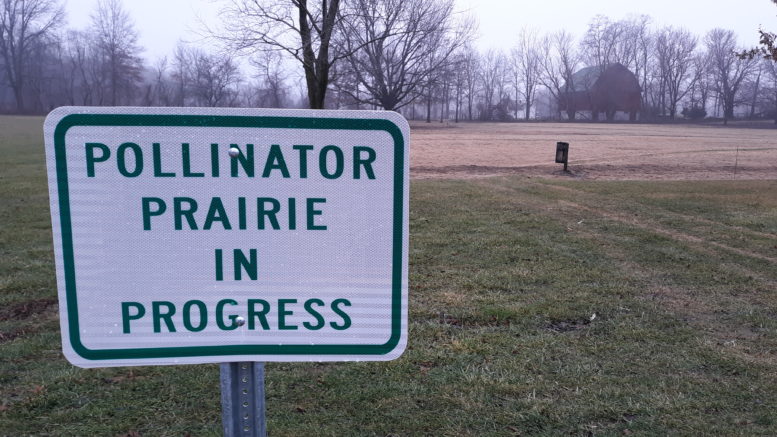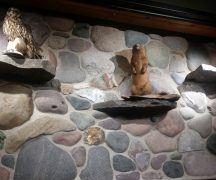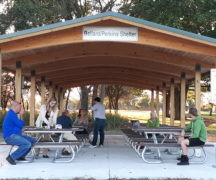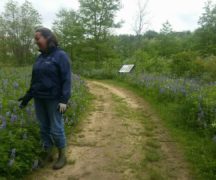By JAN LARSON McLAUGHLIN
BG Independent News
The brown grass in the front of Wintergarden Park has raised concerns among Bowling Green park patrons. Was the lawn attacked by armyworms? Did frequent flooding kill the grass?
Nope. The dead grass is intentional.
At a monthly Bowling Green Parks and Recreation Board meeting in November, Chris Gajewicz, Bowling Green’s natural resources coordinator, again prepared the public for the dead grass in the front of the Wintergarden Park.
“It’s going to look a little weird at first,” he said.
Gajewicz asked for patience from the public as the native prairie is restored. The end result will be worth the temporary ugly brown grass, he assured.
The front of Wintergarden Park will go from mowed lawn to prairie grasses, native flowers and walking trails. The space will provide a natural habitat for monarchs and other pollinators in an area that has been little used by the public.
He realizes that some people prefer lush green grass to natural tall grasses. The Bowling Green Parks and Recreation Department was made aware of that a couple years ago when it allowed tall grasses in portions of Simpson Garden Park – resulting in complaints by some neighbors.
“America is a lawn culture,” Gajewicz said during a recent interview with Clint Corpe on the Morning Show. That often creates “environmental deserts.”
The plan is to plant three-foot prairie grasses in a portion of the front acreage of Wintergarden Park.
“That’s much more environmentally sustainable, much less of an environmental wasteland,” he said.
The existing ball diamond and open lawn for picnics and other recreational activities will remain.
This restoration process will take approximately three years to complete.
In his 21 years with the city parks, Gajewicz said he has rarely seen groups or individuals use the front mowed acreage for recreation. Wintergarden is primarily used by walkers and nature lovers.
Oftentimes, in the past, the front acreage has been unusable due to flooding.
“We live in a swamp, and that swamp has not gone away,” Gajewicz said. “Everything that made it a swamp is still here.”
To remedy that, in 2019, the city installed drainage tiles to address the flooding issues in the front of the Wintergarden/St. Johns Nature Preserve.
At that time, Parks and Recreation Director Kristin Otley explained the activity in the front of the park, with drainage pipes being added in the area that often floods. “It looks like there are a lot of moles,” she said.
Now, the next transformation is taking place.
In September, glyphosate herbicide was applied in a controlled manner to the area that is being restored to native habitat. This killed the existing turf grass and began the site preparation.
Over winter, the site will look dead but is expected to quickly come back to life after the seeds are planted during the spring and begin to grow with the warmer months and spring rains.
Over the next three years, park users and neighbors will witness a transformation of the space. Native flowers and short prairie grasses will grow to an average height of 3-4 feet and cover half of the area, increasing the diversity of the nature preserve.
The long thin areas, where green grass remains, indicate where trails will be incorporated into the restoration project. The new trails will connect the northern portion of the preserve to the recent 20-acre addition.





